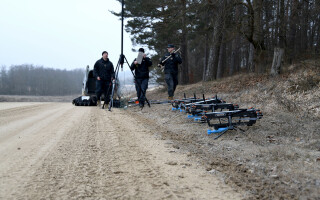The unmanned economy: grappling with regulations and job creation
OtherMay 03, 2018
The day one keynote speeches at Xponential 2018 were all pretty clear on one theme: There is no walking back the evolutionary path that unmanned systems have been paving for decades.
There is still much work to do before automation takes over all simplistic tasks. But, what are the Federal Administration (FAA), U.S. Department of Transportation (USDOTS), and AUVSI doing to make sure this economic growth continues?
The USDOTS is focusing on a new era of integration. Steven Bradbury, General Council for USDOTS said in his address to the Xponential audience that technology is the key focus for the Secretary of Transportation. There is a real commitment by the USDOTS to invest in technology and provide new transportation modes as well as advance safety and efficiency.
USDOT’s biggest investment focus is in unmanned aerial system (UAS) technology, he said.
To date, the FAA has certified thousands of unmanned aerial system (UAS) pilots. Numbers will balloon over the coming years, Bradbury added. UAS will be transformational for all Americans, but that doesn’t come with its current challenges.
Bradbury quipped that the sky is the limit for UASs, but the reality is that UASs are limited by regulations. One being is that UASs can only fly to about 400ft. They also can’t fly at night. These two constraints limit the innovation speed of what drones are capable of doing and how they will impact the economy in the future.
He went on to state that Americans have no tolerance for aviation mishaps. While that is true, UASs still hold a lesser safety record than manned aircraft. Bradbury said that the U.S. holds a great aviation record and one indicating factor that could hurt that record and that will set back the industry is a malicious UAS. Meaning a major attack involving drones will hurt the industry’s need to get past regulations in order to get the economy where it needs to be for unmanned systems.
I found a key point of his speech to be on the efforts the Secretary of Transportation and the FAA are doing to facilitate the use of drones. Parcel drone delivery services are coming to our doors soon. The Secretary of Transportation granted the authority in part 298 of the FAA rules in order to get companies to take to the skies.
However, the biggest challenge will be partnering with local and state government officials to get these regulations limita-tions off the table and enable drones to integrate into the na-tional airspace in order to have a greater impact in the econ-omy.
Bradbury noted that the FAA is working hard to consider new rules or changing existing rules in order to allow drone opera-tors to fly over populations or conduct nighttime operations where the circumstances are needed.
The end-goal and ultimate mission will be to set up the UAS traffic management system that will include a constellation of tools that are developed and rolled out in a harmonized way to achieve regulated UAS traffic management, he said.
This is important because all drones will need to be identified and tracked – especially when dealing with any malicious drone scenario.
What still needs to be done? According to Bradbury, regulations need to be adjusted in regards to the hobbyist exception. Federal law will supersede any state and local government, but the idea is to develop partnerships with local and state government officials to pass laws and regulations that facility the growth of the economy via unmanned systems.
For more on the unmanned job market, read: Jobs and the unmanned systems market





